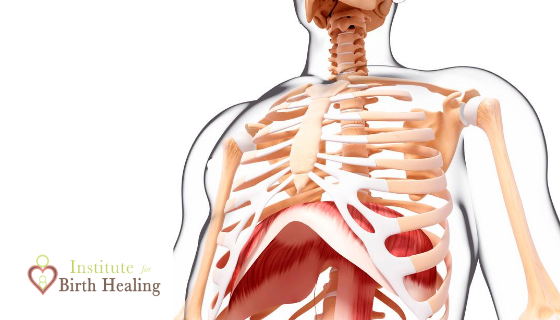The Rib Cage After Birth
[fusion_builder_container type=”flex” hundred_percent=”no” equal_height_columns=”no” menu_anchor=”” hide_on_mobile=”small-visibility,medium-visibility,large-visibility” class=”” id=”” background_color=”” background_image=”” background_position=”center center” background_repeat=”no-repeat” fade=”no” background_parallax=”none” parallax_speed=”0.3″ video_mp4=”” video_webm=”” video_ogv=”” video_url=”” video_aspect_ratio=”16:9″ video_loop=”yes” video_mute=”yes” overlay_color=”” video_preview_image=”” border_color=”” border_style=”solid” padding_top=”” padding_bottom=”” padding_left=”” padding_right=””][fusion_builder_row][fusion_builder_column type=”1_1″ layout=”1_1″ background_position=”left top” background_color=”” border_color=”” border_style=”solid” border_position=”all” spacing=”yes” background_image=”” background_repeat=”no-repeat” padding_top=”” padding_right=”” padding_bottom=”” padding_left=”” margin_top=”0px” margin_bottom=”0px” class=”” id=”” animation_type=”” animation_speed=”0.3″ animation_direction=”left” hide_on_mobile=”small-visibility,medium-visibility,large-visibility” center_content=”no” last=”true” min_height=”” hover_type=”none” link=”” border_sizes_top=”” border_sizes_bottom=”” border_sizes_left=”” border_sizes_right=”” first=”true”][fusion_text columns=”” column_min_width=”” column_spacing=”” rule_style=”default” rule_size=”” rule_color=”” content_alignment_medium=”” content_alignment_small=”” content_alignment=”” hide_on_mobile=”small-visibility,medium-visibility,large-visibility” sticky_display=”normal,sticky” class=”” id=”” margin_top=”” margin_right=”” margin_bottom=”” margin_left=”” font_size=”” fusion_font_family_text_font=”” fusion_font_variant_text_font=”” line_height=”” letter_spacing=”” text_color=”” animation_type=”” animation_direction=”left” animation_speed=”0.3″ animation_offset=””]
The Rib Cage After Birth
We all know the effects that pregnancy has on the body; from overstretched abdominal and pelvic floor muscles to postural changes. While these are more common issues that have a straight forward treatment plan, the rib cage after birth can be a bit more challenging.
Depending on the space in your client’s trunk the growing baby eventually gets big enough to either jam it’s feet and legs into the ribcage or sometimes it’s the head. Your clients that have shorter waists may have more jamming. Longer torsoed women have more space for the baby and tend to not have as many rib issues after pregnancy.
The ribcage is a complex structure with multiple bones that work as a unit with many attachment points to the sternum in the front and the spine in the back. They also have unique motions. I never fully understood the best way to approach the ribs in my educational journey as a physical therapist so I created an approach that seems to get me some good results.
By placing your hands on either side of the lower end of the rib cage you can assess whether a mom has any lingering effects of her pregnancy in her chest.
If you sense the ribs flaring up in the front then it may be more of a thoracic extension pattern of the spine trying to make more room for the baby. If the ribs are forward and feel stuck expanded out to the side, then her ribs need some help coming back down and in. These common rib patterns should go away shortly after birth but sometimes remains stuck in the body.
Sometimes bringing mom’s awareness of this holding pattern can help her bring her ribs back down into a more neutral posture. This is when the front of the lower ribcage is in the same plane as the ASIS. I like it to the ribs dumping down into the pelvis and not in front of the pelvis.
If a mom has difficulty getting her ribcage back to neutral, or taking a deep breath, there are a couple of things that might still be going on that need your attention.
The first is the jamming up of the organs.
The liver and stomach become punching and pushing bags for the baby’s legs or butt. This can jam them up into the chest area. Sometimes they get stuck there and can’t find their normal home in the body. They need help releasing back down into their normal place. The lungs can also be jammed up too, sometimes one side more than the other.
When you have your hands on the lower aspect of the ribs you can sense to see if the energy of the tissues is moving up toward the head. When you find this you know that side is still being affected by the pregnancy. Especially look for this in your shorter waisted clients. On the right side, the liver is directly attached to the diaphragm and if you feel the energy moving up on this side, the diaphragm may be being restricted. This can be one of the causes of difficulty taking a deep breath after labor.
Knowing how to release the organs of the thoracic and abdominal regions can be super helpful in helping these moms breathe easier after birth and heal their diastasis recti. Your clients with recti muscle separations that are above the umbilicus need to have their ribcage assessed. Remembering to address the organs underneath those ribs will make it easier for the ribs to return to their normal position.
Sometimes baby’s will choose one rib to pick on during pregnancy. Kicking and pushing on it over and over can cause that area to not be happy. Being able to assess the different ribs, release any tension being held in them, and treat to help them move better can make your clients feel better. I use spring testing of the ribs in three sections, anteriorly, laterally and posteriorly to find the ribs that feel hard and not mobile and then treat it.
Another issue keeping the rib cage flaring is tightness in the psoas muscles, again it can be more on one side or the other. Manually or passively releasing the psoas muscles while keeping the ribs in neutral alignment will make it easier to stop rib flaring after birth.
To release the psoas muscles I’ve found placing pressure with one hand on the sides of the lumbar paraspinal muscles and the other hand on the insertion of the psoas on the inner thigh area of the same side and offering compression to the muscle can cause it to relax.
However, prior to any work on the psoas muscle, we have to make sure the kidneys are in their proper place. A kidney that is out of place will activate the psoas muscles and no amount of stretching or releasing will be effective long term.
Hopefully, this gives you some new ideas in addressing the ribcage.
The diaphragm is an important part of the core system and their close approximation to the ribcage makes the ribs a necessity in postpartum rehabilitation.
[/fusion_text][/fusion_builder_column][/fusion_builder_row][/fusion_builder_container]

